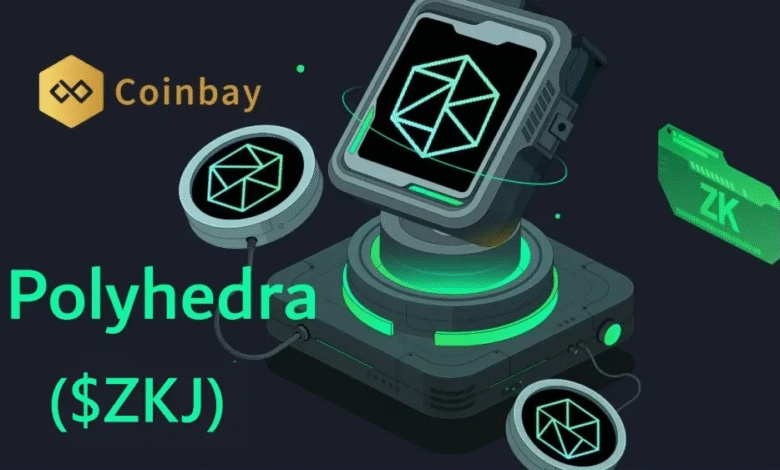ZKJ Token Crash: More Than 60% Plummet Amid Allegations

The recent **ZKJ Token Crash** has sent shockwaves through the cryptocurrency market, with the native token of **Polyhedra Network** plummeting more than 60% within hours. This dramatic fall, triggered by **rug pull allegations** and a resulting **liquidity crisis**, has raised significant concerns among investors about the stability of this digital asset. Initially trading at $1.98, ZKJ’s value swiftly nosedived to an unprecedented low of $0.7625, inciting panic and speculation across trading forums. The token had demonstrated remarkable stability prior to this incident, which makes the current turbulence all the more shocking. As the community scrambles to understand the causes behind this **cryptocurrency crash**, the future of ZKJ remains uncertain.
In the latest events in the cryptocurrency arena, the **ZKJ Token’s** unexpected decline has captured attention, particularly due to its association with **Polyhedra Network**. This incident, often linked to broader market instability, reflects the complexities of digital assets facing allegations of deceit and liquidity failures. As traders grapple with the implications of such **rug pull allegations**, the cascading effects have not only affected ZKJ but also indicated a wider **liquidity crisis** within the ecosystem. The precipitous drop, exceeding 60%, raises critical questions about the security and reliability of emerging tokens like ZKJ. Observers continue to monitor how these developments might reshape investor confidence and regulatory scrutiny in the ever-evolving landscape of cryptocurrencies.
Understanding the ZKJ Token Crash
The catastrophic crash of the ZKJ token on June 15 starkly highlights the inherent risks associated with cryptocurrencies. This incident saw the token plummet over 60% in a matter of hours, raising alarm amongst investors and drawing attention to potential vulnerabilities within the Polyhedra Network. Given that ZKJ had maintained a stable trading range prior to this incident, the sudden decline was surprising and left many questioning the underlying factors contributing to this dramatic downfall.
As the market digested the rapid decline, discussions arose regarding the implications of rug pull allegations and the broader cryptocurrency crash witnessed in various other tokens. The ZKJ token’s fate was intertwined with that of KOGE, leading experts to speculate on liquidity crises causing significant sell-offs. The simultaneous drop of these two tokens suggests that external factors, such as large-scale market manipulation, can heavily influence trading behaviors within decentralized finance ecosystems.
Frequently Asked Questions
What caused the ZKJ Token Crash on June 15?
The ZKJ Token Crash on June 15 resulted from a liquidity crisis linked to the KOGE token. Reports suggest that the KOGE pool ran out of USDT, leading to mass sell-offs that impacted ZKJ and other tokens, resulting in a drastic 60% decline in its value.
How much did the ZKJ Token drop during the crash?
During the ZKJ Token Crash, the price plummeted by more than 60%, dropping from $1.98 to a record low of $0.7625 in less than two hours.
What happened to ZKJ’s market capitalization after the crash?
Following the ZKJ Token Crash, its market capitalization fell significantly to approximately $94.76 million, reflecting an 80% decline in value according to Coinmarketcap data.
Are there allegations of a rug pull associated with the ZKJ Token?
Yes, the ZKJ Token has faced rug pull allegations after its crash, as the community speculated that mismanagement by the KOGE team and liquidity crisis led to a planned harvesting operation, fueling suspicions of a potential scam.
What does the future hold for the ZKJ Token after the crash?
The future of the ZKJ Token remains uncertain following the crash, as it struggles to recover from its steep losses and faces ongoing liquidity issues, making investor confidence shaky amidst speculation of further volatility.
How did the trading behavior of ZKJ Change after the initial crash?
After the initial crash during the ZKJ Token plunge, there was a brief recovery where it rose to $1.41, but this was short-lived as the token quickly retreated to below $0.80, signifying continued selling pressure.
What implications does the ZKJ Token Crash have for Polyhedra Network?
The ZKJ Token Crash poses serious implications for Polyhedra Network, as it significantly undermines investor trust, depletes market capitalization, and raises questions about the stability and management of affiliated tokens.
| Key Point | Details |
|---|---|
| ZKJ Token Decline | ZKJ token fell over 60% from $1.98 to $0.7625 in under two hours on June 15. |
| Initial Recovery | After the fall, ZKJ briefly surged to $1.41 but fell back below $0.80 shortly afterward. |
| Market Impact | Market cap plummeted to $94.76 million after the crash. |
| Connection to KOGE Token | Simultaneous crash with KOGE token led to speculation regarding market manipulation. |
| Liquidity Crisis | KOGE pool ran out of USDT, leading to mass sell-offs and accusations of a rug-pull. |
| Community Reaction | Investors voiced concerns over potential manipulation behind the price crash. |
Summary
The ZKJ Token Crash highlighted the vulnerabilities within the cryptocurrency market as ZKJ token plummeted more than 60% amid serious rug-pull allegations. Investors have expressed their concerns over the liquidity crisis, particularly the connection with another token, KOGE, which also faced similar issues. This incident serves as a stark reminder of the risks associated with cryptocurrency investments, especially in volatile market conditions.




